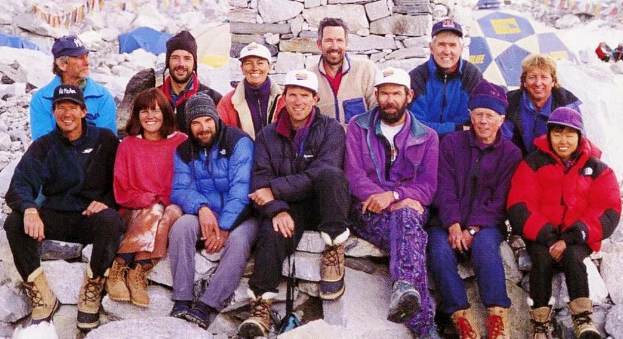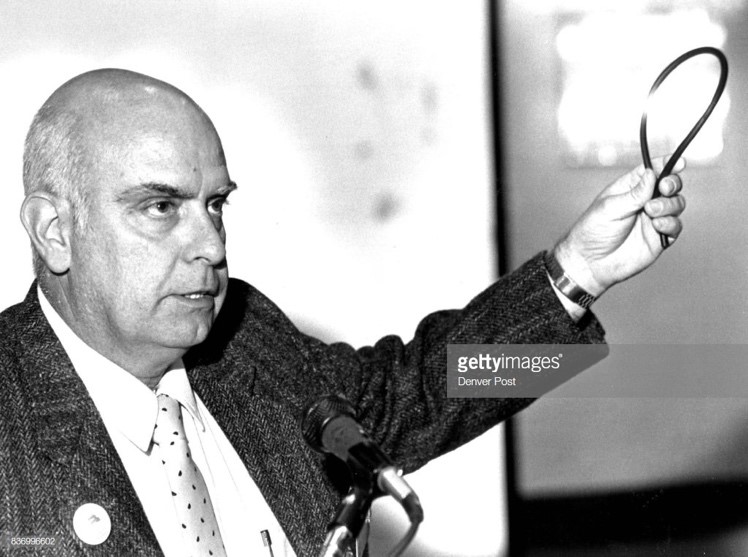“Debates are like the process through which a photographer sharpens the contrast when developing a print. The clearer images that result permit management to make a more informed—and more likely correct—call”
– Andrew Grove
GroupThink: Tragedy On The Everest
Leaders are always very excited to wave the band of consensus each time decisions are supposedly reached by general agreement. They love the word consensus because it seems convenient, time-saving and, prevents annoying and divergent opinions. However, there is more to the consensus than meets the eye. It is a strategy that must be carefully and cautiously applied. Just because more people seem to consent to an idea does not make it the right way to go.
An unprecedented tragedy occurred in 1996 on Mount Everest. Rob Hall and Scott Fischer, two highly experienced trek professionals, led some group of people on a commercial expedition to the summit of Mouth Everest. The group comprised eight clients and guides who had paid a reasonable sum for the experience of their lifetime. The team reached the summit and achieved their dream of surmounting Everest on the 10th of May 1996. Unfortunately, that was not how the story ended, at their descent, a tragedy occurred that led to the loss of five lives including the highly experienced Hall and Fischer.
What Went Wrong?
The leaders knew that a precise timing with no room for errors is required to surmount Everest. They knew that the best time to reach the summit was between midday and 2:00 pm after which the climbers must begin the descent so that they could reach their tents before sunset. If climbers fall behind while climbing the mountain and it became apparent that such climber cannot reach the summit by 2 p.m., the leader must order the climber to abandon his or her summit bid and head back to the camp. This was the standard rule, and the trek professionals had always upheld it, but this fateful day they failed to abide by the rule.
They abandoned rationality in consideration of past investment (time, money and effort) that they have made on a particular undertaking even when they know that such a decision may affect the future outcome. Hall and Fischer suddenly were more concerned about the over $70,000 cost of the trip plus the years that each climber had invested in training for the summit. The trek had taken 18 hours, and they reached the peak after 2 pm, began their descent in the night, unfortunately, a ferocious blizzard enveloped the mountain, five people lost their lives, and the rest barely escaped. Why would Hall and Fischer ignore their own safety rule? Why wouldn’t anyone in the group call their attention to it and speak out? Why was there no open and critical dialogue in the group?

Good Thinking Vs Group Thinking
One of those who escaped, Neil Beidleman, reflected on the experience and said “I was considered the third guide… so I tried not to be too pushy. As a consequence, I didn’t always speak up when maybe I should have, and now I kick myself for it.” In the group Neil ranked very low, he had his reservation about climbing after midday; however, he was too intimidated to tell Fischer. He was “quite conscious of his place in the expedition pecking order.”
In retrospect, as a member of a group, are there times when you are persuaded that the decision made by consensus is not proper, however, you chose to keep quiet lest you are labelled as a dissident? Are there times when your fears about such decision were confirmed? When people are silent and fail to speak out in a group, it only makes the consensus an illusion.
Whenever people are gathered Groupthink is prevalent and leaders must understand how it works. Consensus could be very subjective except in a situation where everyone is free to speak out without the fear of being overwhelmed by the dominant majority. The word consensus has been used widely to communicate the fact that everyone agrees and the group is on the same page. However, in that group exists those who will choose to be quiet and set aside their conviction, preferring to be at peace with everybody. The major reason why people engaged in groupthink in an organisation is that they feel that their idea may cause disharmony or thought they would be castigated, their opinion discarded without any fair consideration.
Groupthink is a psychological phenomenon that occurs within a group of people when the desire for harmony or conformity in the group leads to irrational decision making. Groupthink requires individuals to avoid raising controversial issues or alternative solutions; therefore there is a loss of individual creativity, uniqueness and independent thinking. George Orwell defined it as the mode of thinking that persons engage in when concurrence-seeking becomes so dominant in a cohesive ingroup that it tends to override realistic appraisal of alternative courses of action. The more amiability and esprit de corps there is among the members of a policy-making ingroup, the higher the danger that independent critical thinking will be replaced by groupthink, which is likely to result in irrational and dehumanising actions directed against the outgroups.
The Perils of GroupThink
In his book In Defense of Troublemakers: The Power of Dissent in Life and Business’ Charlan Nemeth’s research shows that people are usually driven by the majority opinion and this narrows how one thinks about an issue. An organisation that practices cult-like corporate cultures encourage uniformity of thought, therefore some strong incentives conspire to make people silent when they see a problem or when they have a better solution. The most significant concern however in some of the unanimous practices is the tendency for people not to think about alternatives at all; therefore, the voice of the unchallenged majority becomes dominant.
A Russian guide, Anatoli Boukreev was part of the Everest 1996 team, he said he found it difficult to build relationships with teammates, so he did not voice out concerns about the loopholes in Rob Hall plans. Anatoli was fearful of the fact that his opinion may not be well received, after all, Hall has led lots of people safely on various expeditions. Reflecting on this incidence, he said “I tried not to be too argumentative, choosing instead to downplay my intuitions”.
Another GroupThink Disaster: The Challenger Space Shuttle
The Challenger space shuttle is another illustration of the peril of groupthink. On the Tuesday morning of January 28, 1986, the space shuttle that comprised a seven-person crew member busted into flames just 73 seconds after take-off. It was supposed to be a special day; school children were assembled to witness the take-off especially since a teacher and a mother of two was among the crew. She was chosen as part of NASA’s Teacher in the Space program. People gathered to witness the launch. It was supposed to be another moment of glory for NASA and an inspiration to the children, that no dream is impossible, unfortunately, it was a harrowing experience as the dream turned to a nightmare. What went wrong?
A Presidential commission of enquiry headed by William P.Roger was set up to investigate the incident. After lots of sleepless nights, the committee concluded that while the leakage in one of the O-rings in the solid rocket booster technically caused the accident, the primary reason why the accident occurred was “a serious flaw in the decision-making process leading up to the launch”. On the eve of the launch, Roger Boisjoly, an engineer with NASA contractor was concerned about the brittleness of the O-rings. He objected to the launch because the O-rings was designed to operate at an ambient temperature of not less than 40 degrees Fahrenheit. However, on the day of the launch, the temperature was less than 30 degrees.
NASA administration, however, refused to heed to this alarm because the launch had been delayed a couple of times. NASA manager George Hardy’s response to Boisjoly “I am appalled by your recommendation.” Another NASA manager Lawrence Mullo said, “My God, Thiokol, when do you want me to launch – next April?”. The launch took off, and the challenger went into flames — this cost the USA $3.2 billion, the lives of the seven crew members and the emotional turmoil to the nation but particularly the project team.

Boisjoly showing the little O-Ring that caused the disaster for Challenger
Diane Vaughan, a Sociologist from Columbia University, made a profound observation in respect of the Challenger tragedy. She observed a lack of constructive internal debate at NASA. In the meeting she attended, someone said Rodney Rocha and Roger Boisjoly, the two engineers who had concerns about the O-Rings before the Challenger disaster, were labelled as worriers, those who cried wolf all the time.
Know the Symptoms of Groupthink
Some of the symptoms of groupthink are:
- An illusion of invulnerability: it is overconfidence that makes highly accomplished professionals believe they have it all wrapped up in their hands. This is common among professionals such as Engineers, Academicians, Lawyers, Physicians and many more.
- Rationalisation of warning signs: despite the evidence as seen in the Challenger or the Mount Everest tragedy, the group may discard the evidence in favour of a sentimental statement such as “we know what we are doing”.
- Inherent of Morality: the belief that group decisions always supersede the individual’s, so members lose sight of their conviction
- Stereotyped Views of Others: those who opposed the common view are labelled and treated as outcasts. It is only a matter of time before the voices of these will no longer sound in the orchestra of decision making
- Pressure on Dissent: opposing views are constantly pressurised to shift ground. You do not have to physically shout on someone to bully them into accepting the general opinion, the look on your face is enough.
- Self-Censorship: members hide their individual belief for fear of group disagreement. When members can read a negative body language from the boss, it will take a whole lot for them to speak their minds.
- Illusions of Unanimity: deception that everyone agrees. The fact that everybody says yes to a cause of action or a motion does not mean that everybody agrees. Our decisions are affected by many factors that include other people’s choices.
- Mind guarding: where some appoint themselves as censors and hide critical information from members. Members would only make decisions based on the information that is at their disposal, and so organisations that do not put all the information on the table will never have an actual consensus.
Conclusion
Groupthink left unchecked can be catastrophic. Leaders who want to escape the dangers associated with this tragedy must surround themselves with creative and independent thinkers who can shape their unconscious reality. Many individuals are like Beidleman in an organisation. They see themselves as little within the group; they believe their voice does not count and unfortunately when the consensus system is built in such a way that their voices indeed does not count. Then they won’t have a choice than to surrender to the whims and caprices of the unchallenged majority. Decision making should go beyond “all in favour; please say aye” Such cannot truly capture the opinion of those who may feel intimidated to swing against the vociferous voice. It is a two-way street – leaders must ensure that they maintain the right atmosphere where everyone matters in their organisations and they must also breed stable employees who would stand their ground and ensure that the right thing is done for the good and future of the organisation.



